(By Road Services staff )
Not everyone can take transit. Not everyone can bike or walk to school or work. We need roads. Climate-friendly roads.
King County Road Services builds and maintains 1,500 miles of road and 185 bridges. We also build and maintain sidewalks, bike lanes, and traffic lights. Here’s how we do it in a climate-friendly way.
We reuse materials – almost all materials!
Landfills are a top contributor to greenhouse gases which cause climate change. We keep as much construction material as possible out of the landfill.
Just like you sort your trash at home, we sort materials on a project site. This is what our sorting looks like.

It’s called the Green Economy because we reuse almost all of it.
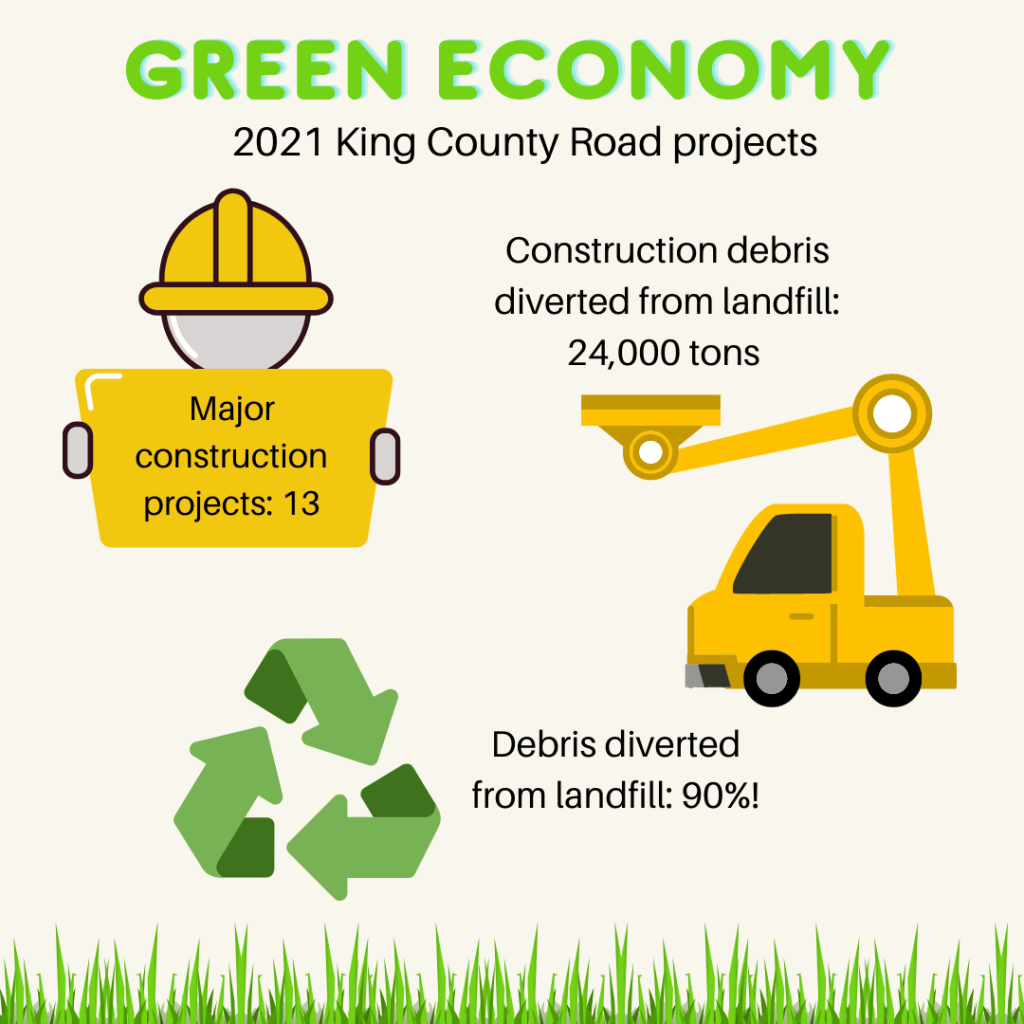
So where does it go? Let’s look at asphalt.

Project Profile: NE Stillwater Hill Road/Kelly Road NE pavement rehabilitation
Last summer, we rebuilt NE Stillwater Road/Kelly Road NE in Northeast King County. We removed material including steel, guardrail, wooden posts, and a lot of cracked, old asphalt. The newly constructed asphalt road contained 20% recycled materials.

The old asphalt went to a plant where it was ground into smaller pieces and used in new asphalt. New asphalt contains expensive heavy oil, so using recycled asphalt is less expensive and better for the environment.

We will use this same process on these pavement projects in summer 2022.
How can you give your materials in your personal life, a second life?
- Use the blue recycling bin. Recycled plastic can end up in a local park as a bench or playground equipment.
- Put food and yard scraps in the green bin. Food waste can be compost for healthy gardens.
- Donate used clothing or furniture. Your neighbors might love that purple fringe sweater from 2003.
Our friends at Waste Management shared this great, simple site.
We reuse trees
On occasion, we need to take down trees to make way for new wider walkways, roads and bridges. When possible, we reuse those trees right on site.
Project Profile: Coal Creek Bridge Replacement
Coal Creek Bridge is in southeast King County. The 109-year-old steel bridge is rusting and losing sections of steel underneath. Old creosote timber that holds up the bridge is rotting. The narrow water channel underneath can’t control the rain events we get more often.


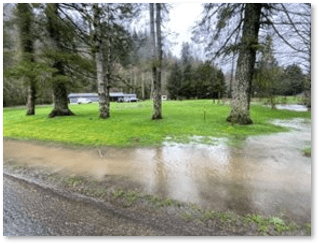
The old bridge will be replaced with a new, wider, bike and pedestrian friendly bridge. The channel will be wider and better manage high water. To make way for the new channel and temporary bridge, we cut trees like the small one you see in this lower left side of this picture.
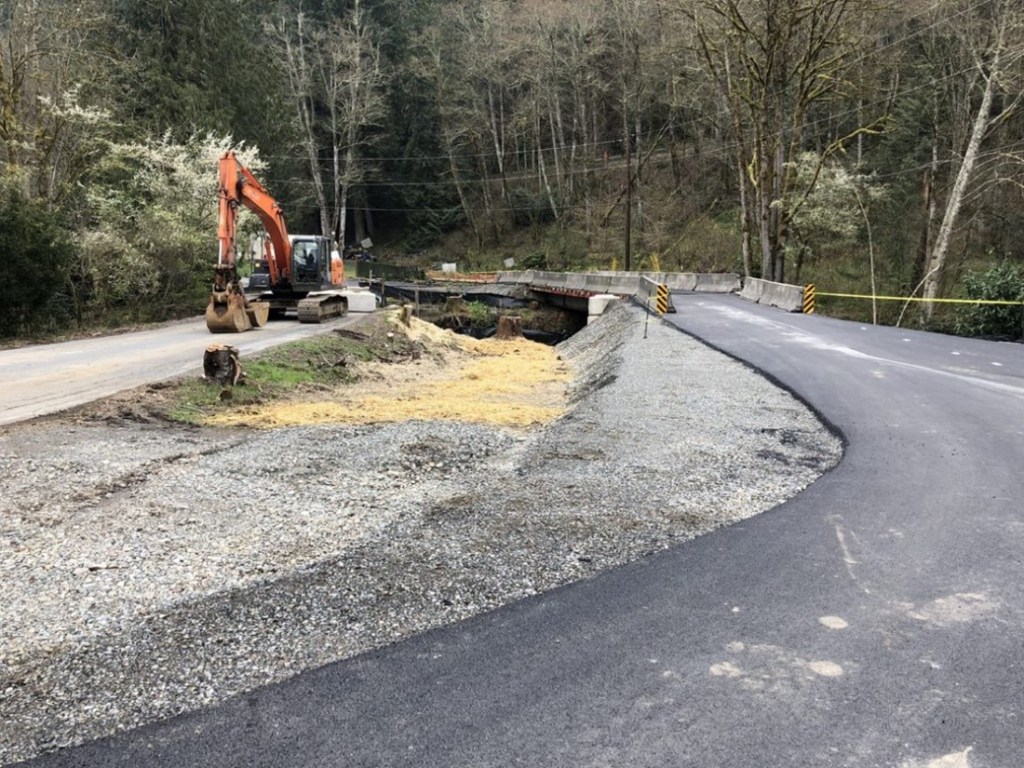
We will reuse these tree trunks and root wads as part of this project. They will be set and anchored in and along the river to direct the water, protect the riverbank, and provide better habitat for fish. The heavy, rough-surfaced trunks slow down the river’s energy and stop it from damaging the banks.
We consider this a career change for mid-life trees.

We will post pictures of this project throughout the summer so check back to see how it’s going!
If you need to cut down trees, please consider planting new ones to take their place. We do! How can you give your trees, tree branches and bushes a second life?
- Cut it into firewood
- Use logs & stumps as furniture
- Create habitat for wildlife
- Make it part of your landscaping
- Turn it into mulch or wood chips
- Bring out your inner artist

Roads, Water, Fish: Finding the Balance
Roads take us to work, school, friends and family. Farm-to-market roads across our low-lying valleys have been in place for decades and are vital to the economy. Streams, rivers and lakes provide a wonderful quality of life and sustain our planet.
At King County Road Services, we find ways to help roads and water co-exist. It can be a difficult task! We are guided by our Clean Water, Healthy Habitat initiative.
Too much water!
You don’t have to be a weather forecaster to notice our storms are more frequent, stronger, and bring a lot more water. That water has to go somewhere.
Managing stormwater with our King County partners at the Department of Natural Resources and Parks (DNRP) is a big part of what we do at Roads. Delivering cleaner controlled stormwater runoff creates healthier habitats and safer roads. Our work begins the moment raindrops hit the ground.
Ditching: it’s not what you think!
Water from rainstorms flow off the road, into ditches and into other stormwater systems that move water away from the road. Ditches collect road surface water where it can be absorbed into the ground or directed into the King County stormwater system.
Those ditches must be clear of debris to make sure the water doesn’t back up onto the road. That’s what we do. We clean, clear, mow, and fix ditches, culverts and drainage systems across unincorporated King County. We keep our roads open and safe and protect water quality.
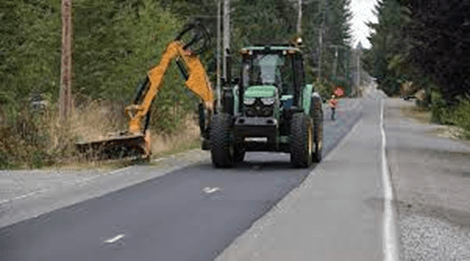
Want to be part of the solution to keep water flowing, clean and moving through our region until it reaches the Puget Sound? Here are some ideas as shared by King County’s Department of Natural Resources and Parks (DNRP)

If you want to know where your water goes, check out this map. King County prepared this field guide for teams. It’s pretty interesting!
Traffic and Fish
One way we do that is culverts. King County uses culverts to safely carry water and fish under roads and out of the way of traffic. Culvert replacement is part of what we do.
Old culverts are small and narrow. While these smaller culverts were cheaper to build, they require much more maintenance and must be replaced more often. When natural debris like mud, branches, or rocks block the small opening, water has nowhere to go. During a heavy rainstorm, that water backs up onto roads and property.

Many of these culverts have been in place for more than 50 years and are starting to deteriorate.
We keep an eye on culverts for three reasons: they can crack or collapse and cause a sinkhole, they fill up with debris inside the culvert, and they are a problem for fish.
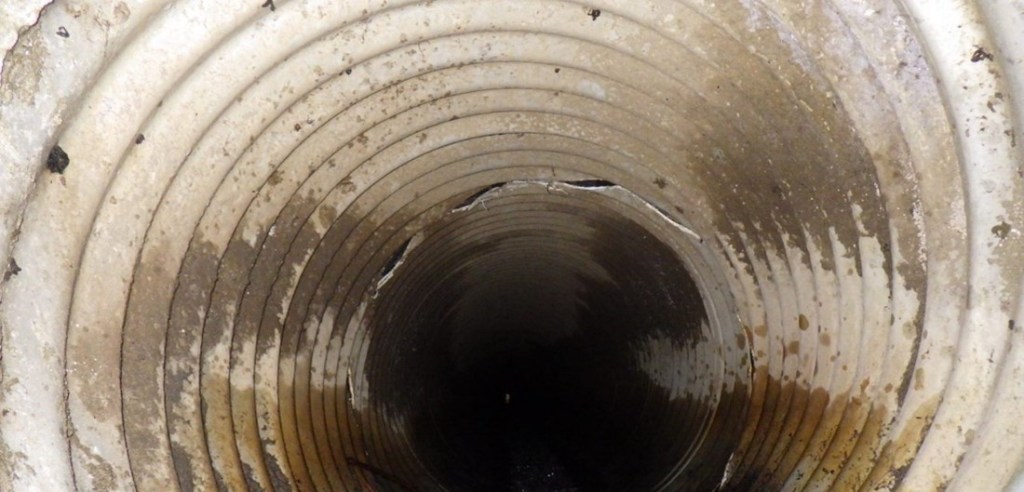
We choose the right type of culvert to solve the right problem. Sometimes, we can solve all three problems like we did last summer on NE Lake Joy Road near Duvall.
The fast-moving water caused erosion at the outlet of this old, narrow, metal culvert. To move upstream, fish had to jump to get into the culvert. The sharp metal edges cut the fish. The pipe also plugged easily with debris requiring constant attention to make sure that it did not plug and wash out the roadway.

We replaced it with this concrete box culvert.

The new culvert is much larger. It can pass debris without any blockages and requires significantly less maintenance to keep it open and functioning properly. This new concrete culvert will last three times longer than the old metal culvert.
Since the culvert is wider and the bottom is made of sand and gravel, and water speed is much slower even at high flows, fish do not know they have entered a culvert at all.
Not only did it strengthen the road in an area that gets more rain every year, but we saw coho salmon upstream which tells us they passed through the new culvert. Coho have more space to spawn.
It was so exciting!

How can you help keep culverts clear? Put trash and waste where it belongs. King County has this great recycling guide.
Which roads in unincorporated King County are most prone to flooding? We have a list.
Climate change demands (and gets) our attention
A changing climate amplifies our existing natural hazards that impact our roads. We manage more events more often. These days, our maintenance teams clear more slides and close more roads due to flooding or downed trees as storm events occur more often and with greater strength.
King County has a dedicated interdepartmental Climate Action Team that implements the 2020 Climate Action Plan and Roads actively participates in climate plan implementation through its operations and the way in which we deliver our capital projects.
Vashon Island and Rising Tides
We also manage rising sea levels.
Take a look at Vashon Island and Quartermaster Harbor. Our workers close SW Quartermaster Drive, a vital road that connects Vashon and Maury Islands during significant storm events and king tides. The rising sea levels and tidal surges mean water and debris completely cover portions of these two roads, making them unsafe and impassable. Our crews respond by closing these roads until the water subsides and these roads are safe to use. We are exploring longer-term solutions to this significant issue, but funding is scarce.

“King tides on Vashon Island have been a prevalent issue for many years and have become increasingly worse at times in recent years. From November to February for a day or two during a king tide week we monitor tide charts and winds at times to be prepared for road closures and debris removal. It takes time to clear this road and that can be difficult for residents who depend on this road.“
Aaron Moe, Maintenance Supervisor
King tides overtopped and closed SW Quartermaster Drive as recently as January 2022. When tides recede, piles of seawater debris must be removed before the road can reopen. Rising sea levels lead to more damaging tidal surges which close low-lying roads like SW Quartermaster Drive more frequently.
In 2019 and 2020, we took steps to protect nearby Dockton Road SW on Vashon Island. We repaired dozens of sinkholes. We actively monitor both roads as part of our inspection program.

How can you help reduce sea level rise?
- Protect beaches and join a clean-up crew. Soft buffers like sea grass, sandy dunes, low beach brush all protect our coastline.
- Create a raingarden. Rainwater absorbed locally means less runoff into Puget Sound.
- Landscape with soft materials like plants, small gravel, and woody debris (maybe reuse that tree you removed!)
We are in this together
King County Road Services supports Earth Day every day. We manage our stormwater system to keep water controlled, moving and clean. We replace aging, poorly functioning culverts with large fish passable openings, under our roads, which opens up habitat for endangered species. We respond to more frequent emergencies that come with climate change, changes like rising sea levels, wetter storms, and stronger winds.
We listen to you when you share your concerns, the issues you see on roads because you use them every day. Thank you for being our eyes and ears and for helping to keep King County a healthy place to live and work. There are many Earth Day activities scheduled this week. Lots of learning opportunities too. Start your Earth Day journey with King County here.
You must be logged in to post a comment.